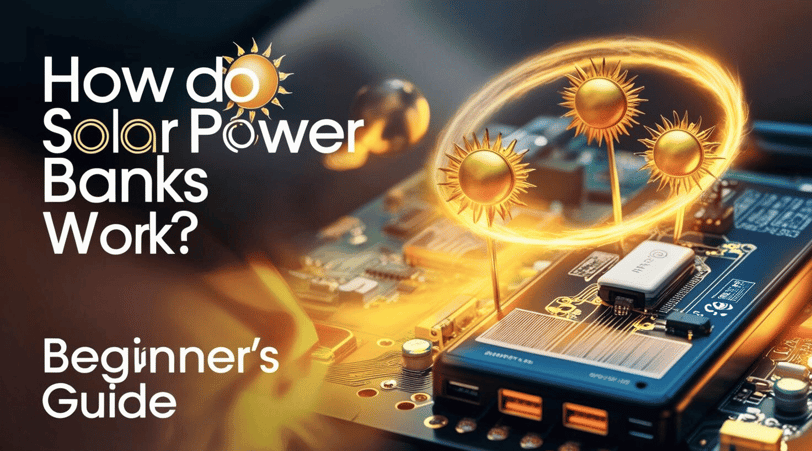Save big on solar gadgets today!
How Do Solar Power Banks Work? A Beginner’s Guide


Introduction: Powering Up with the Sun
With more travelers, hikers, and eco-conscious consumers going off-grid, solar power banks are having their moment in the sun — literally. These gadgets let you harness solar energy to charge your phone, tablet, or smartwatch anywhere, anytime.
But if you’ve ever wondered “How does a solar power bank actually work?” — you’re not alone. In this beginner’s guide, we’ll break it down step-by-step, show you what’s inside, and share some simple tips to get the most out of your solar-powered tech.
🔋 What Is a Solar Power Bank?
A solar power bank is a portable battery pack that can be charged using sunlight via built-in solar panels. It stores energy in an internal battery, just like a regular power bank, and lets you recharge your devices on the go.
🔄 How it’s different from a regular power bank:
Traditional power banks charge only from wall outlets
Solar power banks can charge via sunlight + USB
Ideal for camping, beach days, remote travel, emergencies, or green living
⚙️ How Solar Power Banks Work: Step-by-Step
Let’s break it down into bite-sized steps:
Sunlight Hits the Solar Panel
The panel converts solar rays into electricity through a process called the photovoltaic effect.Electricity Charges the Internal Battery
The converted energy is stored in the built-in lithium battery — just like how your phone stores energy after a wall charge.Battery Powers Your Devices via USB Ports
You plug in your phone or device and draw energy just like from any regular power bank.
☀️ Simple Analogy:
Think of the sun as a fuel pump, the panel as a funnel, and the battery as your tank. Charge it up when it’s sunny — use it when you need power.
🧩 Main Components of a Solar Power Bank
1. Solar Panels
Typically monocrystalline (high-efficiency) or polycrystalline
The bigger the surface area, the more sunlight it captures
2. Rechargeable Lithium-Ion Battery
Usually ranges from 10,000mAh to 50,000mAh
Stores energy until you're ready to use it
3. Charge Controller
Regulates voltage so your battery doesn’t overcharge or fry
4. Output Ports
USB, USB-C, micro-USB, sometimes wireless pads
5. Bonus Features (Depending on Model)
LED flashlight
Waterproof casing
Power level indicators
Wireless charging pad
Built-in carabiner or compass
Pros and Cons of Solar Power Banks
✅ Pros:
Eco-friendly: Powered by clean, renewable energy
Great for emergencies: Works without an outlet
Perfect for travel: Lightweight and portable
❌ Cons:
Slower solar charging: Can take 20–40 hours under sunlight
Sunlight dependent: Less effective in shade or indoors
Initial charge from USB often needed before first use
⚠️ Best used as a backup or secondary charging method, not your only power source.
🧭 Tips for First-Time Users
Pre-charge via USB before a trip (solar charging is slow)
Expose to full, direct sunlight — not filtered through glass
Avoid overheating: Don’t leave it in a hot car
Use the LED indicators to track battery levels
Clip to backpack while hiking for all-day sun exposure
Conclusion: Sun-Powered Simplicity
A solar power bank is a brilliant blend of technology and sustainability. With just a little sun and some smart usage, you can stay charged during adventures, emergencies, or even just daily commutes — without plugging in.
So whether you’re a weekend camper or an everyday eco-warrior, knowing how solar power banks work puts the power — and the planet — in your hands.
Go green. Stay charged. Let the sun do the work. ☀️🔋